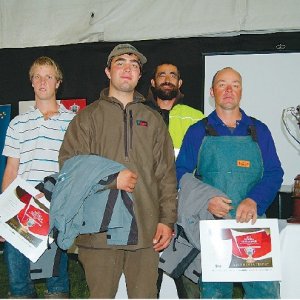Located 20km south of Rotorua, the 330ha property is owned by the Kapenga M Trust – 915 shareholders of Tuhourangi descent. It owns 1858ha, including a sheep and beef farm and a deer farm.
The dairy unit is one of three finalists in the 2012 Ahuwhenua Trophy competition which incorporates the Maori Excellence in Farming Award. Kapenga M won the Ahuwhenua Trophy for sheep and beef farming in 2003.
Trust chairman Roko Mihinui says key to the trust’s success is a fundamental determination to maintain the ownership and guardianship of the land for future generations.
It also aims to grow expertise among its own people, expecting that eventually all its staff, including farm consultants, sharemilkers, managers and farm hands, will see their lineage in the land.
Kapenga M’s sharemilkers, Edwin and Marianne Schweizer, have been in the role for four years.
Mihinui says Kapenga M has operated under a 50:50 sharemilking arrangement since the conversion of the farm to dairy in 1995.
“The arrangement is structured to give the sharemilker incentives to invest in the farm and its herd, a strategy which has proved positive for both parties and led to consistently strong performances.
“While the good relationship between the trust and its sharemilker is seen as critical to the farm’s success, the trust tries, where possible, to employ and train staff who [see their lineage in] Kapenga M.” The current second in charge, Eddie Coward, is of Tuhourangi descent.
Kapenga M has a mixed Jersey/Friesian herd of 1020 cows. Its stock performance results from a strategy of developing high-breeding worth cows that can harvest high levels of pasture.
Since 2009 the farm’s total milk production has increased steadily from 241,44kgMS in 2008 to 371,169kgMS although its herd has only increased by nine cows. Production per cow has gone from 246kgMS to 372kgMS.
Considering farm contour and altitude, milk production/ha is high at 977kg/ha. Central North Island average is similar at 982kgMS/ha however Mihinui says its assessment is that the ‘average’ central North Island dairy farm has greater grass growth potential
The amount of pasture consumed by the cows / ha is 1 tonne higher than the central North Island average, indicating efficient pasture management and correct stocking rate, he says. Pasture quality appears good on the farm.
“It has been a challenge, on some farms, keeping on top of quality due to the high pasture growth rates. Pasture is scored fortnightly from October to March with the aim of keeping average cover between 2000 kgDM/ha and 2300kgDM/ha,” he says.
Kapenga M emphasises environmental sustainability, for example, ensuring water that runs through the farm is of the highest quality. The effluent system is ‘future-proofed’ with good storage and spreadable areas. Nitrogen use is limited to 150kg/ha and not used during high-risk times and P use has been reduced, given that current high soil fertility levels and direct drilling also reduces soil run-off to waterways.
The profitability of the dairy unit is above the national average when comparing all New Zealand farm owners with 50% sharemilkers – an excellent result given land contour, says Mihinui.
The farm is considered a System 3 operation, with the aim of harvesting as much high-quality pasture as possible. The trust sets an annual target of <500kg DM/ cow of imported feed (excluding grazing).
Mihinui says consistent grazing residuals are the key to the farm’s grazing management, with cows given a “refresher” on how to graze in the first round of each lactation.
















